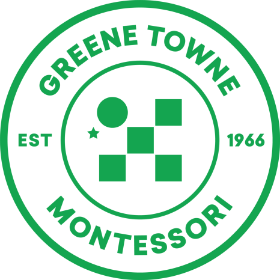Magnolia Room: The Prepared Environment
“…even in preparation of the child’s environment we are faced with a serious task, for in a sense we must create a new world- the world of childhood.” Maria Montessori (The Child in the Family) As Montessori guides we believe that the most powerful tool to aid in your child’s development is our classroom- or […]

“…even in preparation of the child’s environment we are faced with a serious task, for in a sense we must create a new world- the world of childhood.”
Maria Montessori (The Child in the Family)
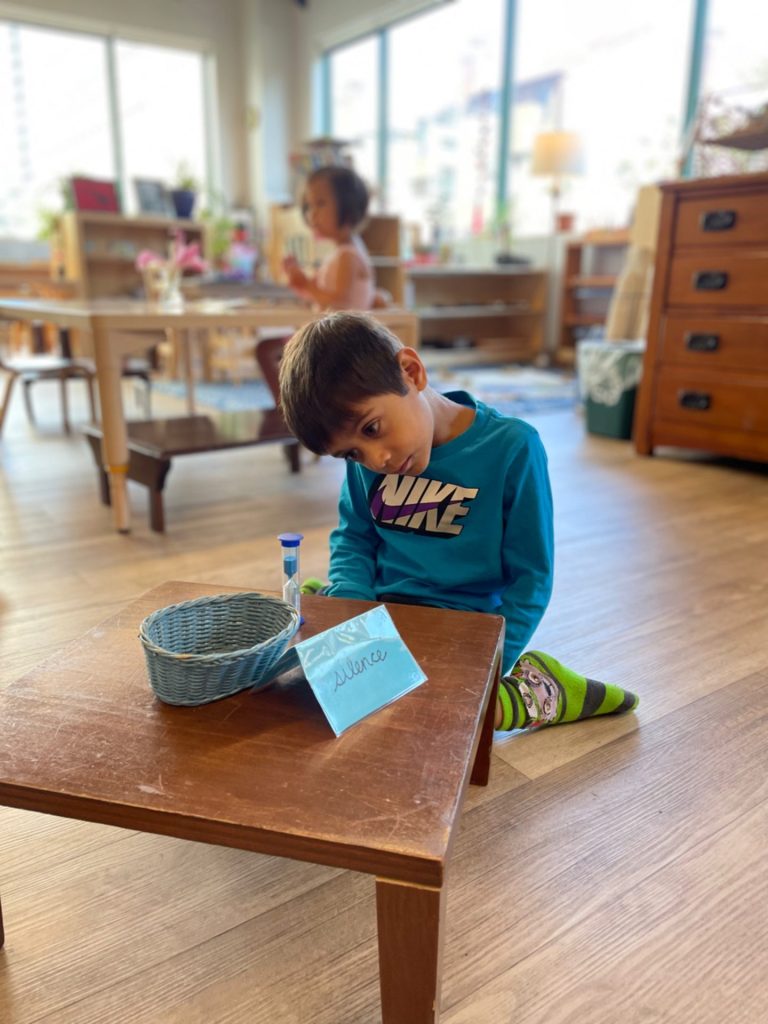
As Montessori guides we believe that the most powerful tool to aid in your child’s development is our classroom- or as we refer to it ‘the prepared environment’. A Montessori prepared environment is a healing place and appeals to the developing mind of the young child because it fosters independence and encourages spontaneous work. The children truly feel it at home, with objects and furnishings that suit them. Beyond their bedroom, the classroom may be the only space that is uniquely theirs. This feeling of ownership inspires your child to act upon their environment and by doing so, they develop and learn.

Prepared Environments are orderly.
The prepared environment is orderly because we know that to manifest an internal order, your child must first absorb external order. We meet this need for order in every facet of the environment, starting from the very layout of the materials. Objects and materials are displayed on the shelves in the order they are used. There is a carefully crafted flow of materials that subtly reinforces the progression of their use and in turn, reflects the child’s development. In general, the materials are displayed from simplest to most complex in a left-to-right, top-to-bottom progression. This is indirect preparation for writing and is reflective of the physical representation of progress in cultures where a left-to-right order is predominant. In cultures where written language is predominantly right-to-left, the organization of materials will reflect that cultural norm. This intentional ordering of materials extends deeper as all the items needed for a particular task are grouped together, typically on a tray, and are color coded. They are even ordered on the tray, left-to-right, in the order of their use as the activity is undertaken. This is all preparation for orderly thought and foundational for the formation of logical and reasoned thinking.
Additionally, a rotation of material is essential to maintaining order and simplicity. We have a variety of materials on display but also a variety of materials that can be rotated in as interests emerge or shift. Rotation also allows us to limit available materials. The limitation of materials is important in supporting the development of the will- or patience. If there are three sets of every material, your child loses the opportunity to wait their turn. In waiting, your child develops several skills: Grace and Courtesy in asking for a material, their will in waiting for a turn, observational skills, and the potential for exploration of other materials. For instance, as your child waits to use a familiar material, they may decide to use something new in the interim. This choice may never have occurred if they had been able to gratify their initial desire instantly.
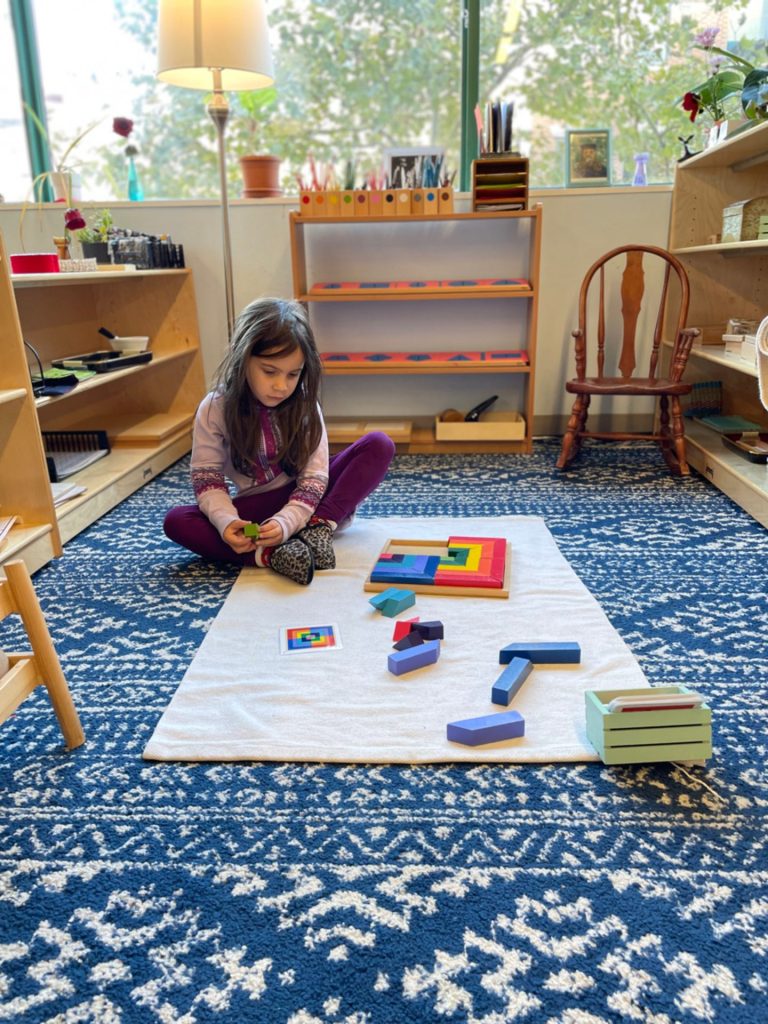
Prepared Environments are beautiful.
“…the ‘house of the child’ should be lovely and pleasant in all its particulars; for beauty in the school invites activity and work…”
Maria Montessori (The Child in the Family)
The prepared environment is beautiful and simple. This appeals to the child’s sensitivity for order but also their tendencies to explore and work. Simplicity of the environment makes exploration much easier and the beauty makes it that much more enticing. When the materials are beautiful, your child is instinctively drawn to them and wants to work with them. And when the trays are laid out simply, that work is undertaken with no unnecessary obstacles to concentration. When the objects in the environment are visually appealing, the children are more delicate and careful with them. They come to see the materials as things to be treasured. It is always such a pleasure to hear two children discussing how to treat an object carefully or admiring something new on the shelf.
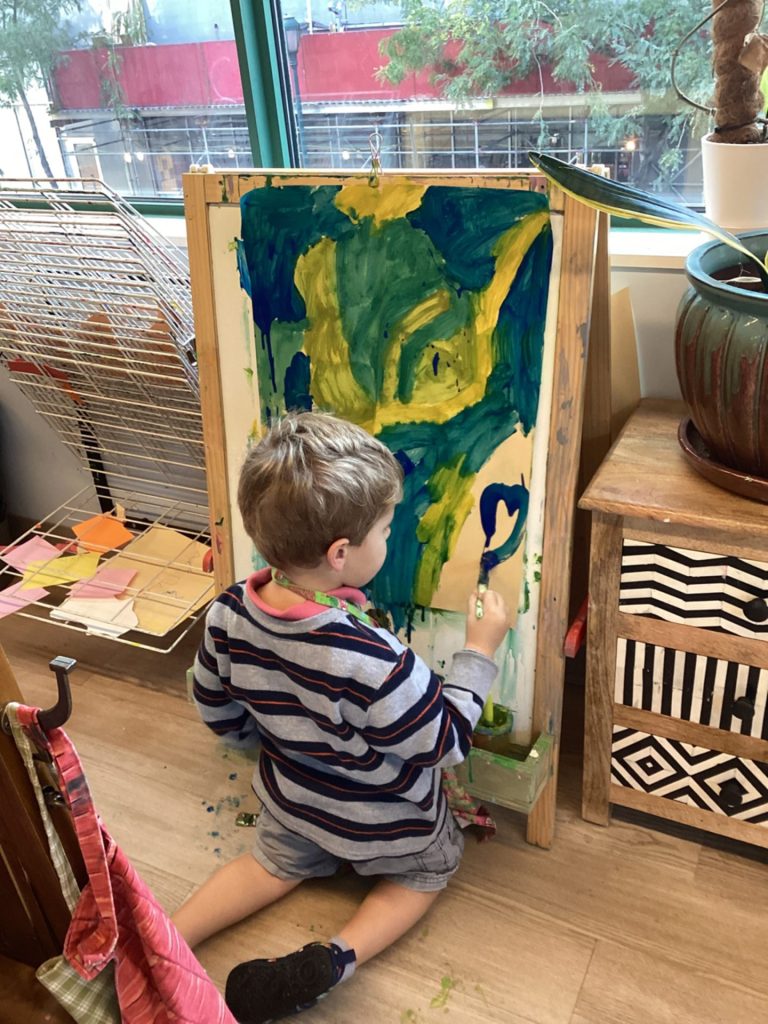
Prepared Environments are functional.
The materials in the environment are beautiful but, most importantly, functional. Our foremost objective is that the child should do things for themselves and if a material is difficult to operate, the child is not set up for success. For instance, if a pitcher is beautiful but does not have an adequate handle or spills when poured, it is not functional and could lead to frustration. We want to remove any unnecessary obstacles to concentrated work. In their daily life, outside the prepared environment, children encounter many obstacles and we aim to provide them with an environment in which they are free from any hindrances to their independence. We are also careful to use the appropriate tools or implements for the correct job. For instance, in our homes, we might use an old toothbrush to scrub in tight crevices. In the prepared environment, we would use a small brush explicitly created for that job. This is because we know that the child from three to six is still classifying their world and is coming to understand the purpose for every object. As such, it may cause confusion to see a toothbrush being used for cleaning anything but teeth. Because your child is developing logical and reasoned thinking, we want to support that by only using familiar objects for their explicit purpose.
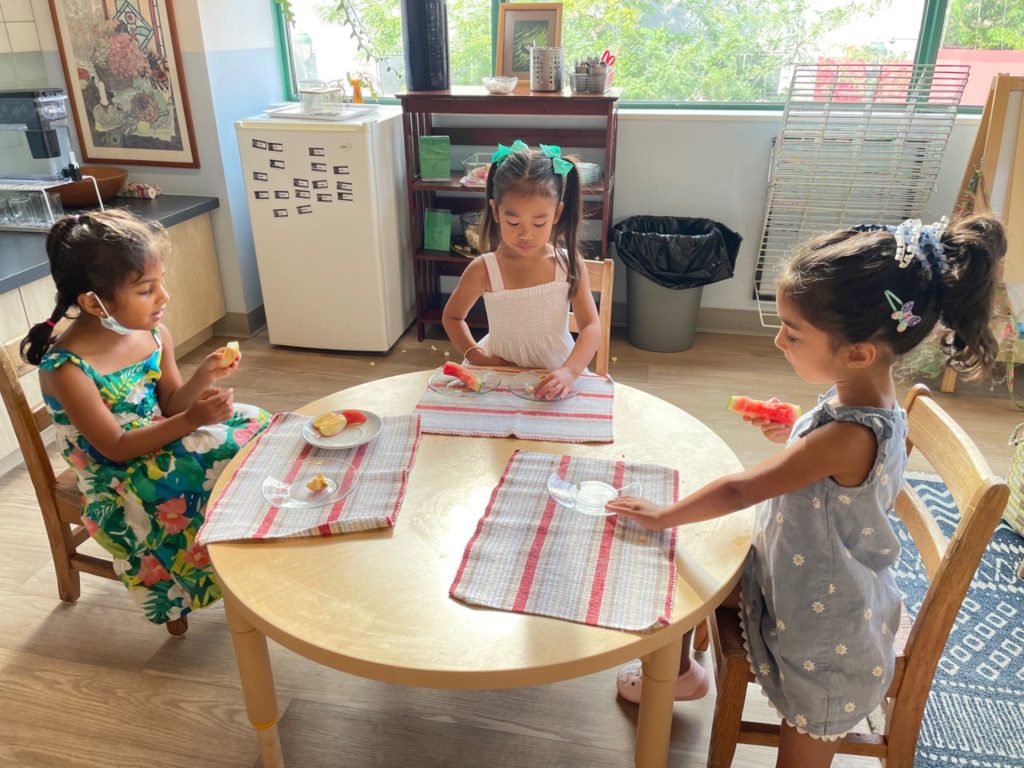
Prepared Environments are homey.
This is an environment where the children live as nature intended them to live. It is not a school room as we traditionally envision. It is meant to appear as the children’s house. A place where they are at home and feel responsible for and pride in their environment. For this reason we use natural materials, a variety of furnishings, beautiful rugs, plants, lamps, etc. We do this is to mimic a home. This is especially important in our all day environments because your child is here for a long day. We want them to feel comfortable and even cozy. It’s their home away from home. Because of this, we have created places for relaxation as well as work. We have a rocking chair for observing the classroom, a meditation space for quiet contemplation, a story tape chair where the children can put on headphones to take a break from the noise of our busy classroom, and a library for quiet reading. We also have our class pet, Mariah Carey. Having a pet offers the children the opportunity to care for a living thing. She is also very calming and the children love to watch her hunt crickets, climb on her branch, or nap in her log.

Prepared Environments protect your child’s freedom.
“By putting him within the framework of this environment, we give him the freedom to reach his end.”
Maria Montessori (The Child in the Family)
In the prepared environment, your child has the purest opportunity to exercise freedoms that might not exist for them elsewhere. This is because it is an environment that suits children and is preciously prepared for them. Freedom is embedded in all that we do in the prepared environment. Your child must be free to follow their innate urges because these are what drive their development. In a prepared environment, the children have four specific freedoms – the freedom to choose work, the freedom to repeat work, the freedom to move, and the freedom to communicate. These freedoms are upheld by the adults, the community, and the environment itself. With these freedoms, we also have limits. We move slowly and carefully to ensure that everyone is safe. We speak softly so that everyone can concentrate. We are gentle with the materials so that others can use them in the future. We do not interrupt each other’s work because we respect each other’s concentration.
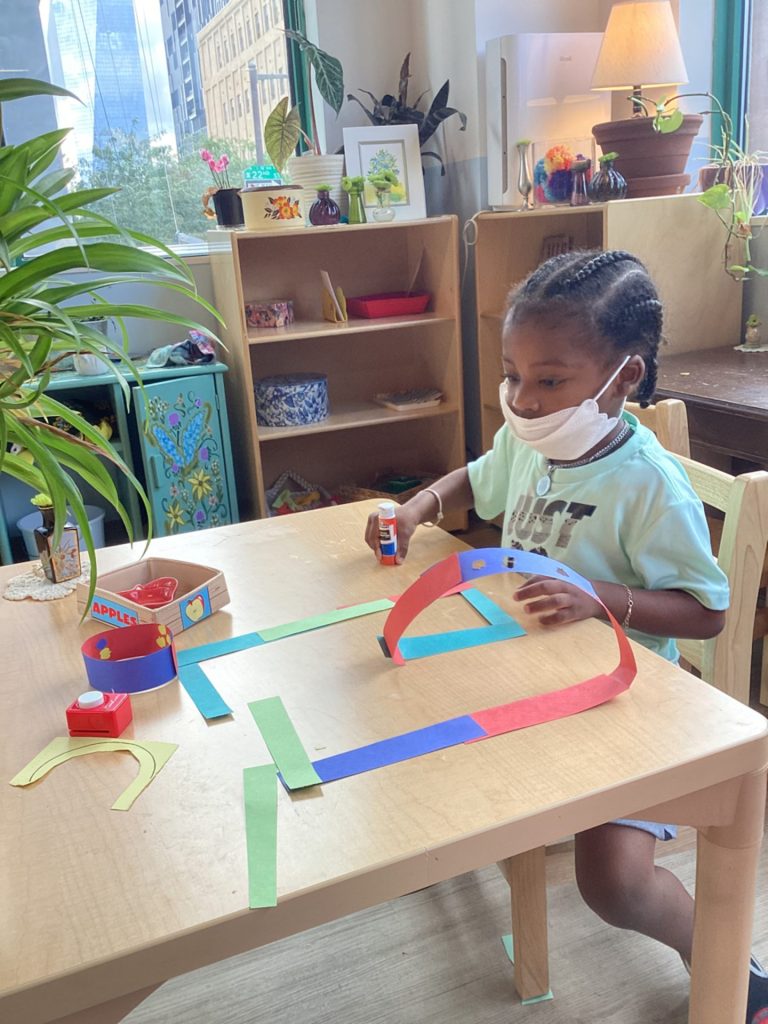
Prepared Environments support your child in making wise choices.
Choice is a beautiful part of the Montessori prepared environment. There are so many fascinating, alluring materials that call to your child and after they are given the lesson, they may choose from any of them. As adults, we are faced with choices constantly but often as children, we were not afforded the opportunity to practice the skills necessary for making healthy decisions. The prepared environment provides opportunities for building the skill of making wise choices. For instance, if the child is strongly experiencing a need to move, they may choose to walk the line. If they are feeling a pull towards sensory stimulation, they may choose from a plethora of material and activities to satisfy that urge. The prepared environment establishes a space for children to make meaningful choices that aid in their development. While also giving them feedback about their choices. For instance, if they choose to work roughly with an object, it can break. Many of the objects in our environment are made of breakable materials such as wood, ceramic, and glass. Or if they choose to use all the beads for one necklace, they will see there are none left to make another one. The adults do not need to point these consequences out to them, the prepared environment and the materials in it speak for themselves.

Prepared Environments support your child’s independence.
“When we watch a child in an environment that is his and evokes a response in him, we see that he works by himself toward his own self-perfection.”
Maria Montessori (The Child in the Family)
The prepared environment supports independence primarily by providing accessible materials to the children. For each work, your child is given a clear and precise lesson and allowed to repeat, as a means of gaining mastery, and then they are able to independently perform tasks- such as sweeping, washing a table, polishing a metal object, cutting out their own drawing, preparing their own snack, writing their own story. We call this ‘functional independence’ and these acts of functional independence lead to independence of thought. Functional independence breeds intellectual independence. When your child can do things for themself, they can problem solve by themself, they can create extensions of work by themself, and ultimately they learn to think for themself.
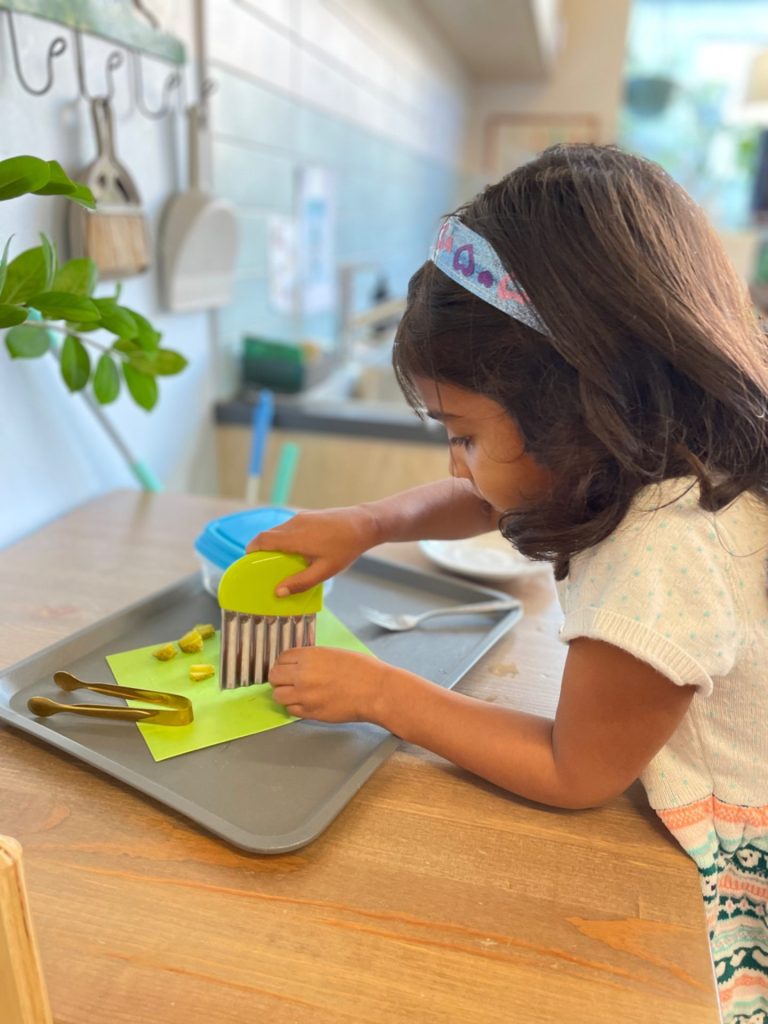
Prepared Environments support social cohesion and community.
The prepared environment is designed to support the development of each individual child and the development of a community. The children learn to maintain the prepared environment so they can coexist peacefully. For instance, in a Montessori prepared environment, the children share material by using it individually and returning it to the shelf as they found it, ready for the next person. They mop up the water if they spill so the next person does not slip. The guidelines and community agreements that the children develop together at the beginning of the year help them learn to take care of their environment and community. Below you will see our community agreements for this year. The social aspects of the prepared environment are also supported by the mixed age community because as your child develops, they can act as a mentor for the younger children. The number of children in a Montessori prepared environment encourages a greater focus on relationships between the children rather than the relationship of each child to the adult.

Prepared Environments support the development of confidence.
The prepared environment has a special hand in building confidence in your child. First and foremost because the environment is orderly and accessible. Your child is confident in their ability to independently care for themself and their community because they know that the means to do so are always available to them. There are child-sized brooms to sweep up a mess. There are always towels handy to wipe up a spill. The containers are easy to open and if they have trouble, there are 22 other children to help. There is a stool available if something is out of their reach. The furnishings are child-sized and comfortable for them. As part of the prepared environment, the adults also help to support their confidence. We offer lessons on activities that appropriately challenge your child. These activities allow your child to attempt new skills but are scaffolded based on skills they have already mastered. Activities progress sequentially from simple to complex. Confidence is also promoted through the trust between adult and child. We trust in the child and in turn the child feels confident to take risks and attempt new challenges.

The Prepared Adult in a Prepared Environment
As adults in the prepared environment, we are drawn to this work because of a deep belief in the rights of all children. As such, it is our fundamental drive to protect and expand those rights, primarily the right to freedom. When we are serving as a guide in the prepared environment, we relinquish the need to manage and control your child. And, in turn, we relish the opportunity to work alongside your child and their developmental drives; many times this will be a more passive role than an active one but nonetheless, invaluable.
“Now we must learn to take ourselves in hand and watch from the sidelines, following him at a distance, neither tiring him with our interventions nor abandoning him.”
Maria Montessori (The Child in the Family)

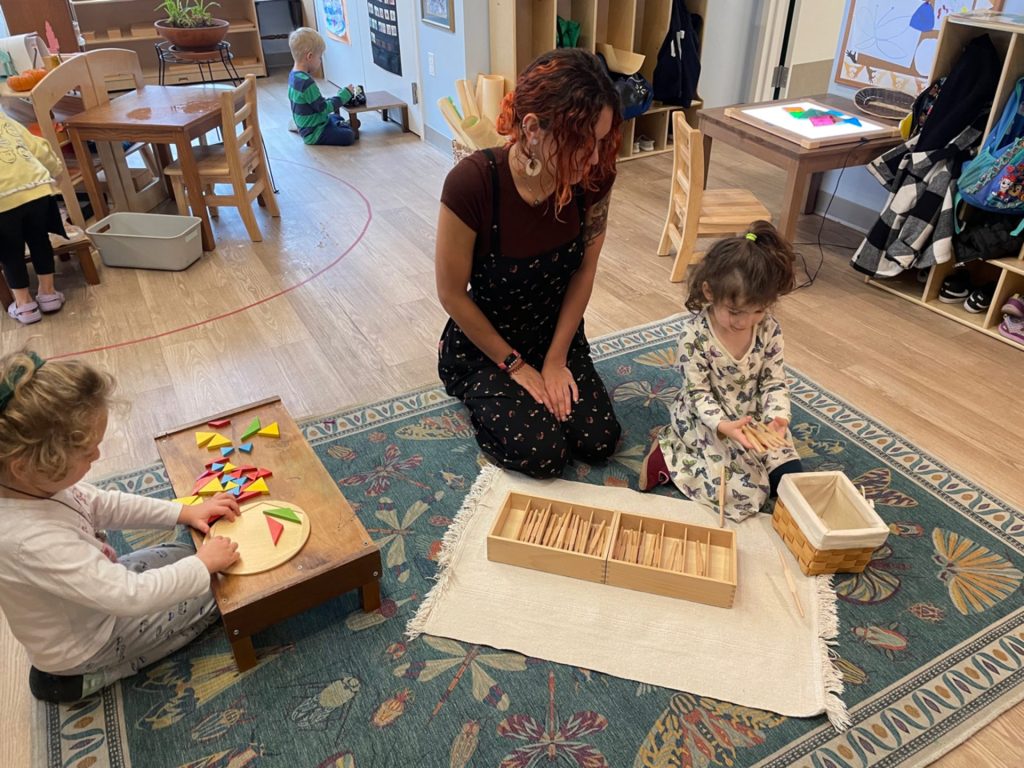
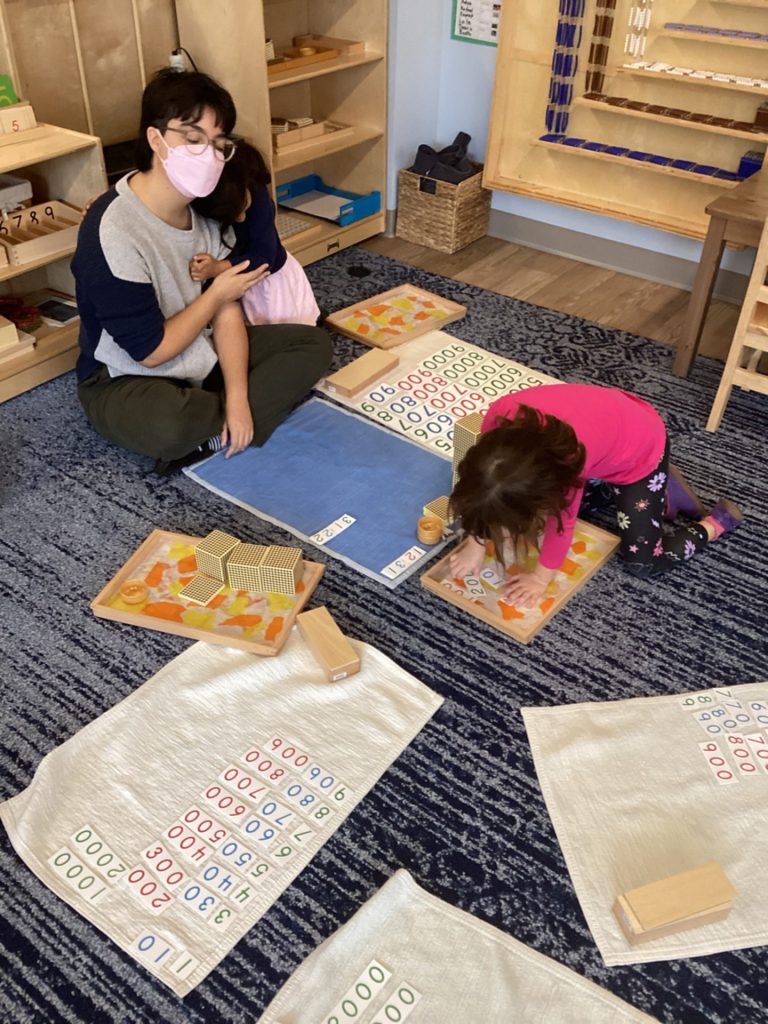

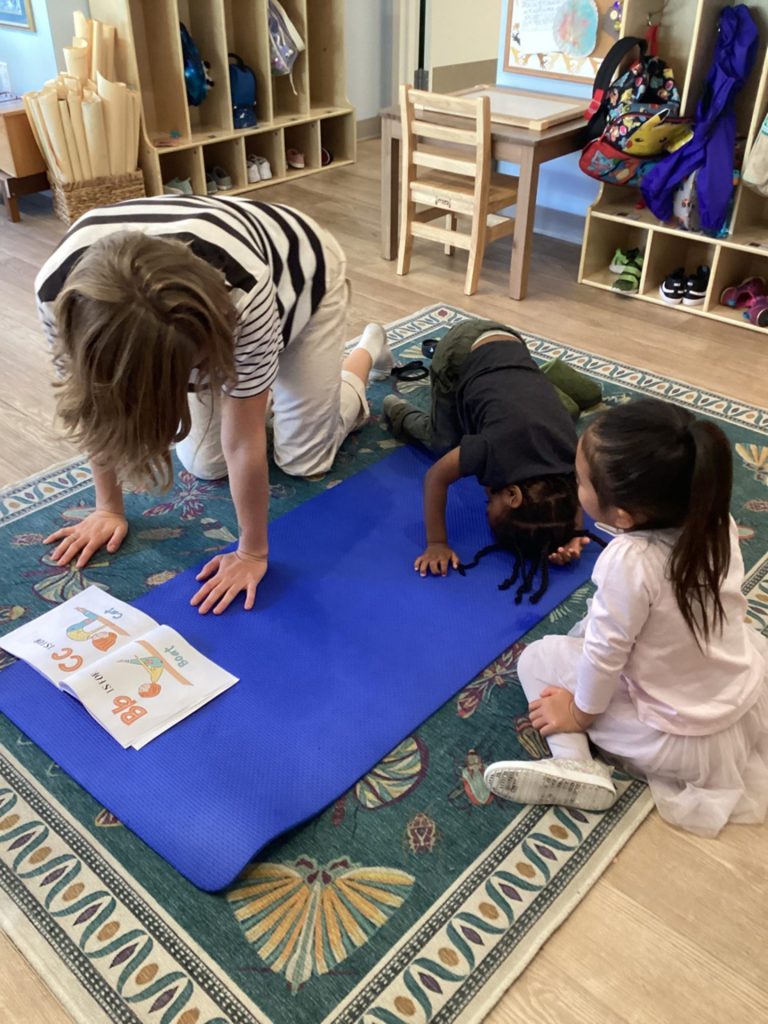
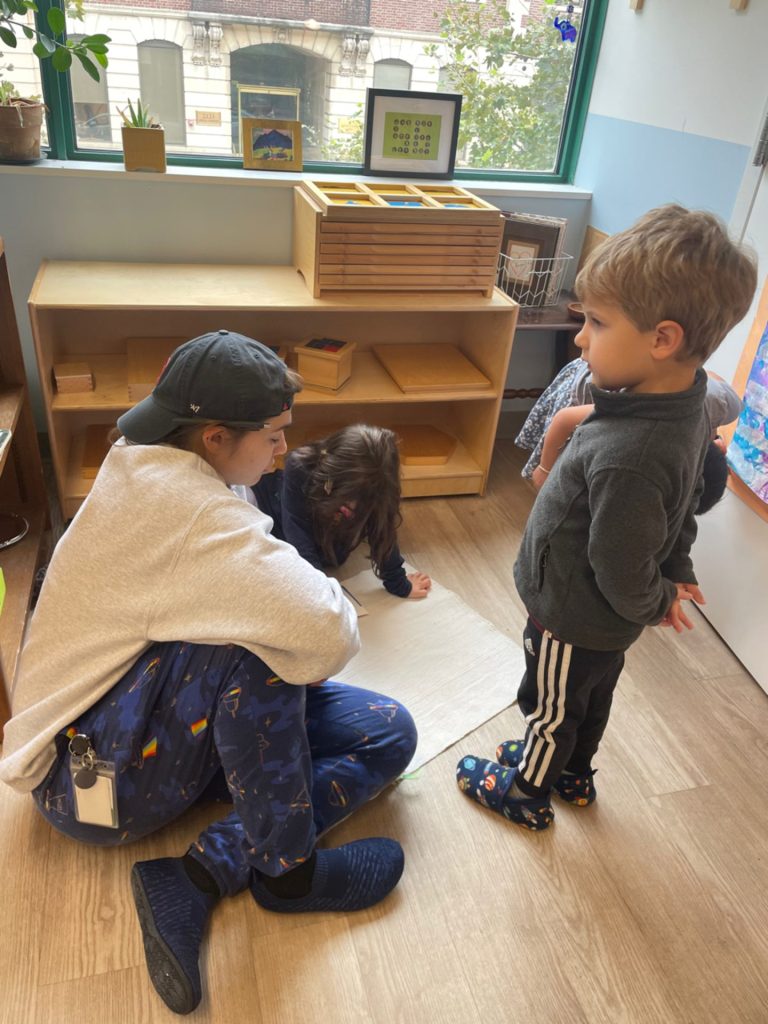





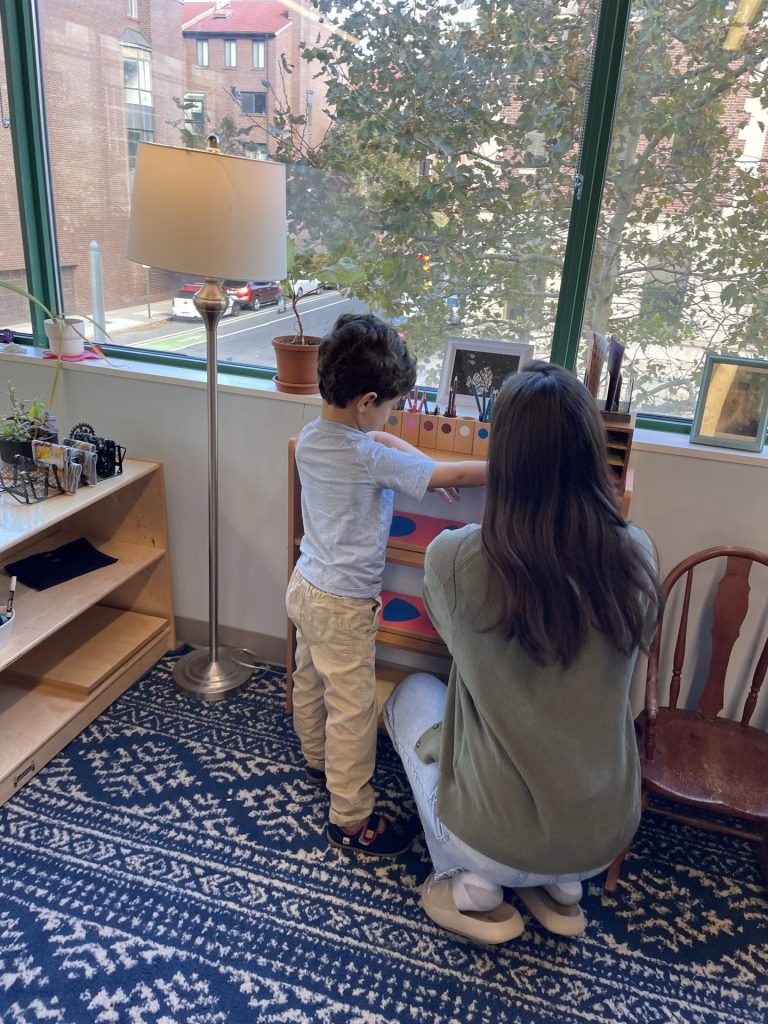

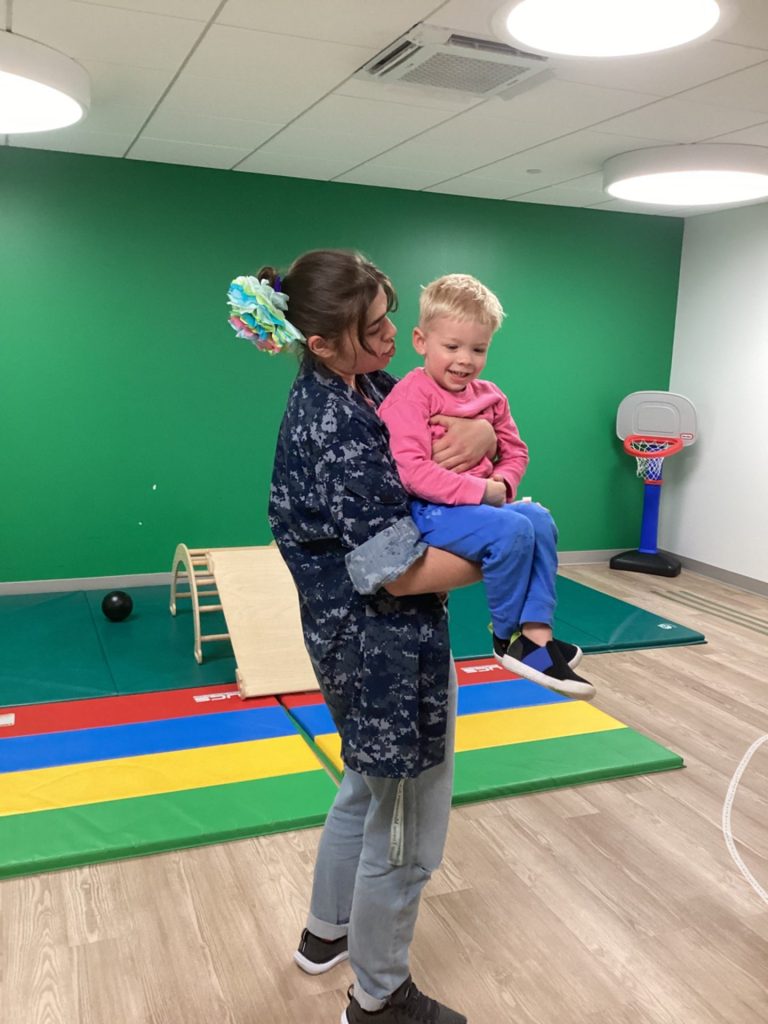
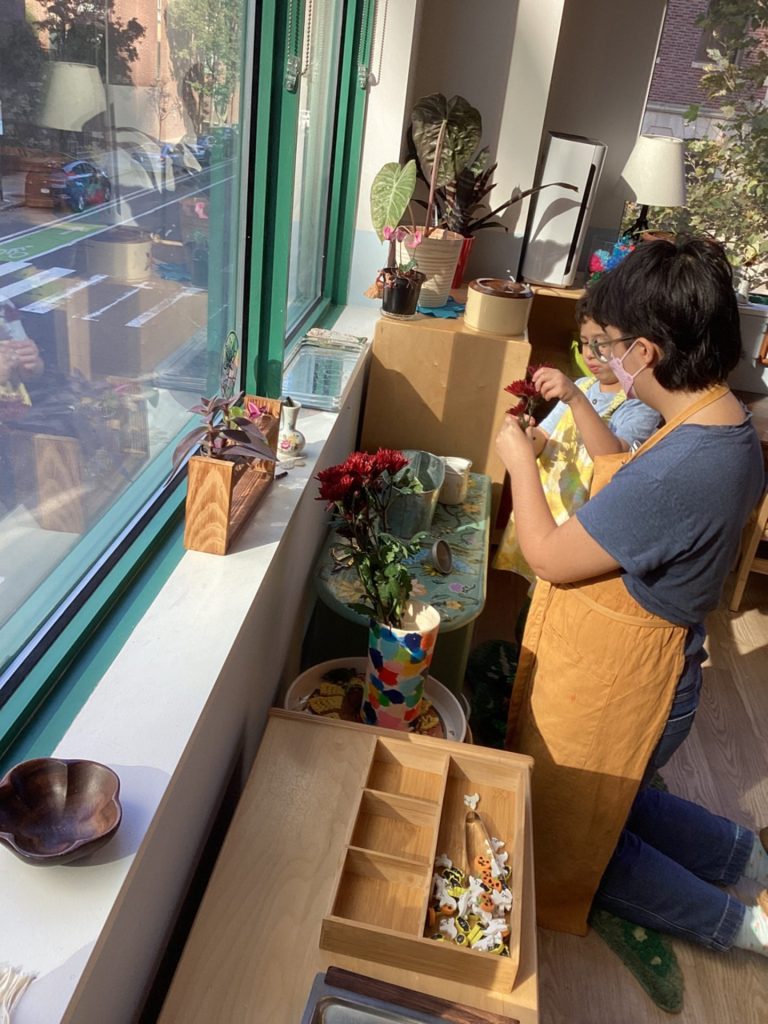
Upcoming Events
- 11/8- Kindergarten Field Trip to PAFA
- 11/10 & 11/17- Parent Teacher Conferences
- 11/22- Pajama Day & HALF DAY
- 11/23 & 11/24- SCHOOL CLOSED
- 11/28- Parent Workshop: Bridge Between School & Home
Please reach out with any questions or comments!
Ms. Maggie, Ms. Amanda, Teacher Bailey, Ms. J, Teacher Milo, & Ms. Shawn
